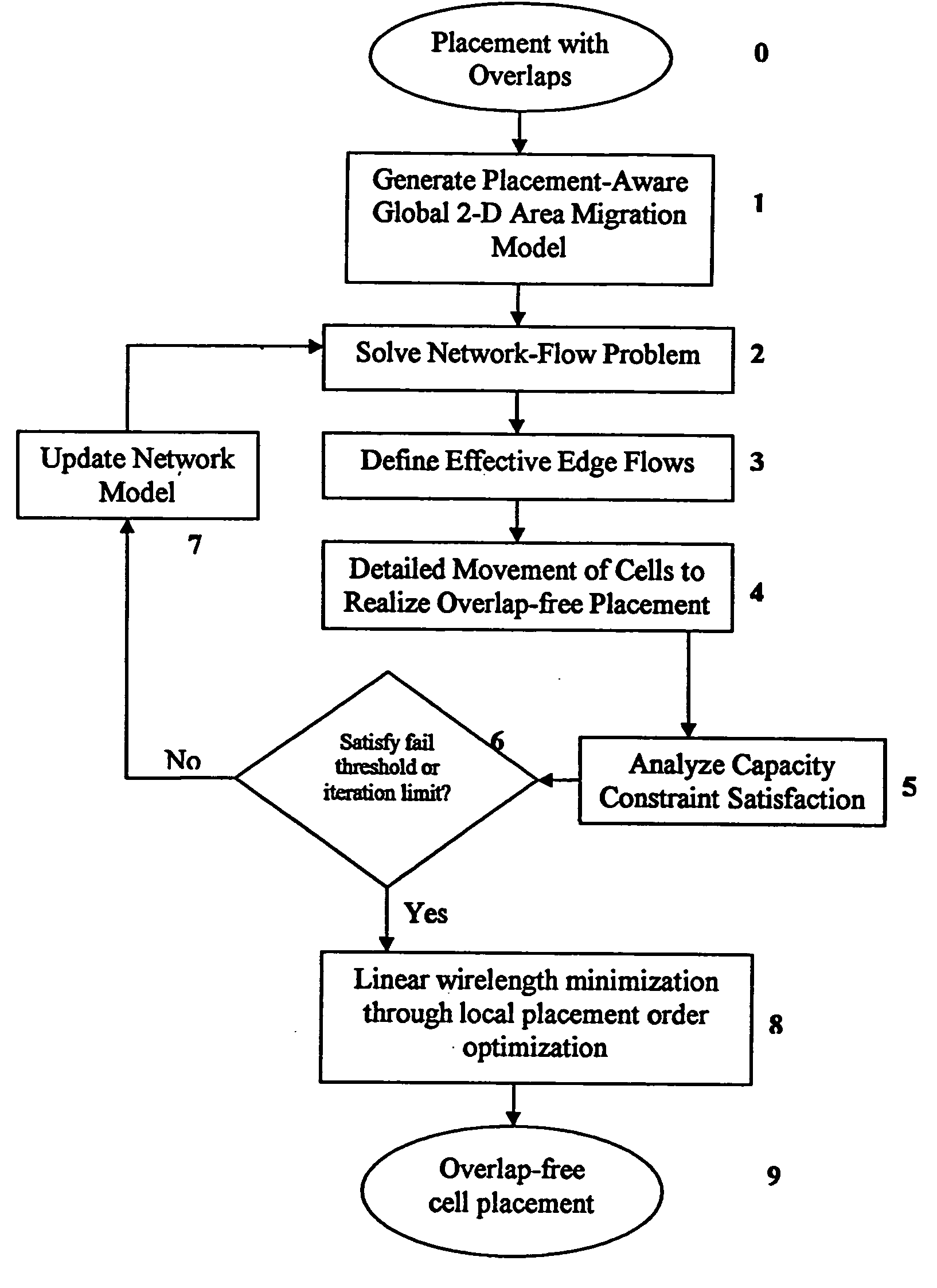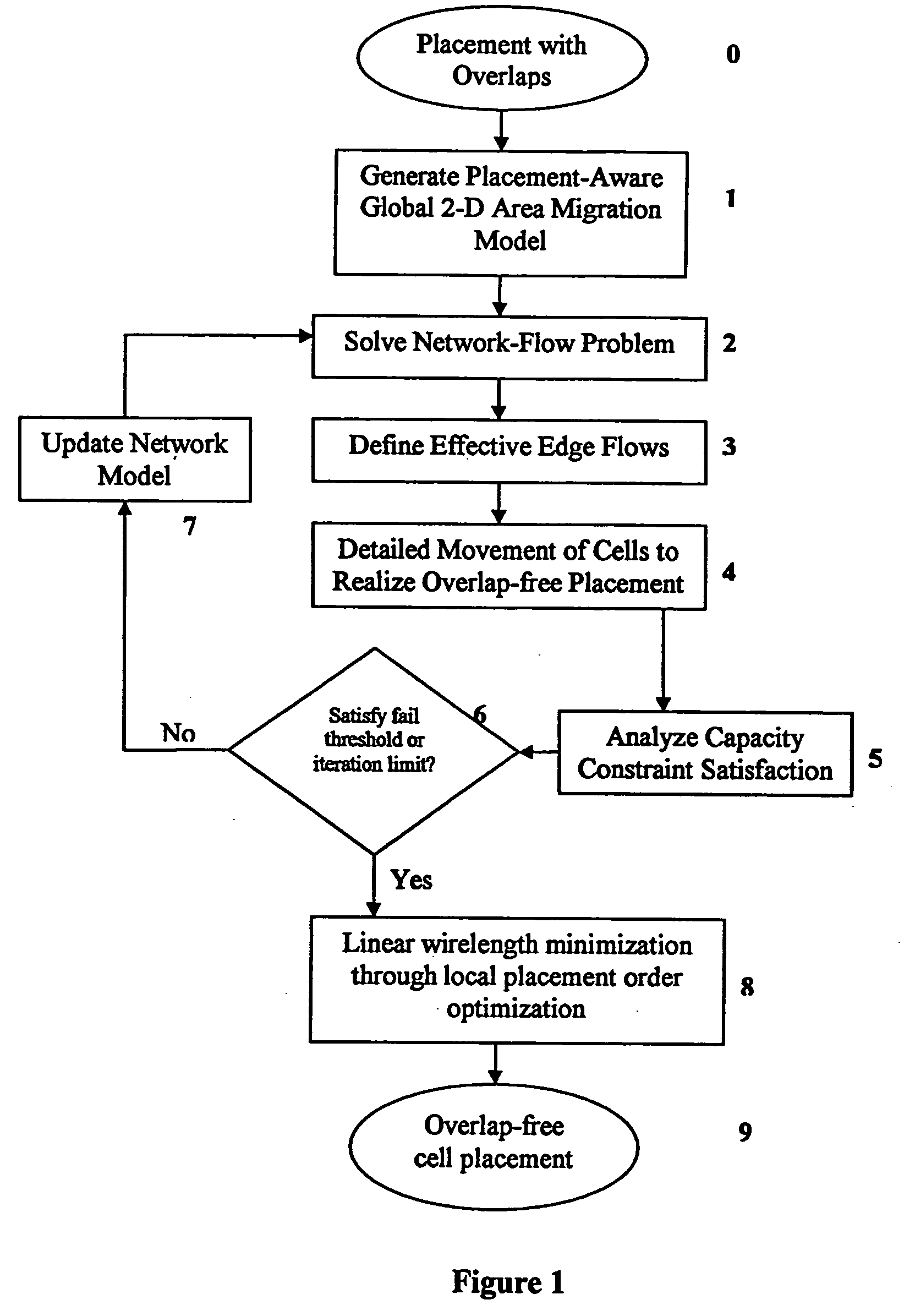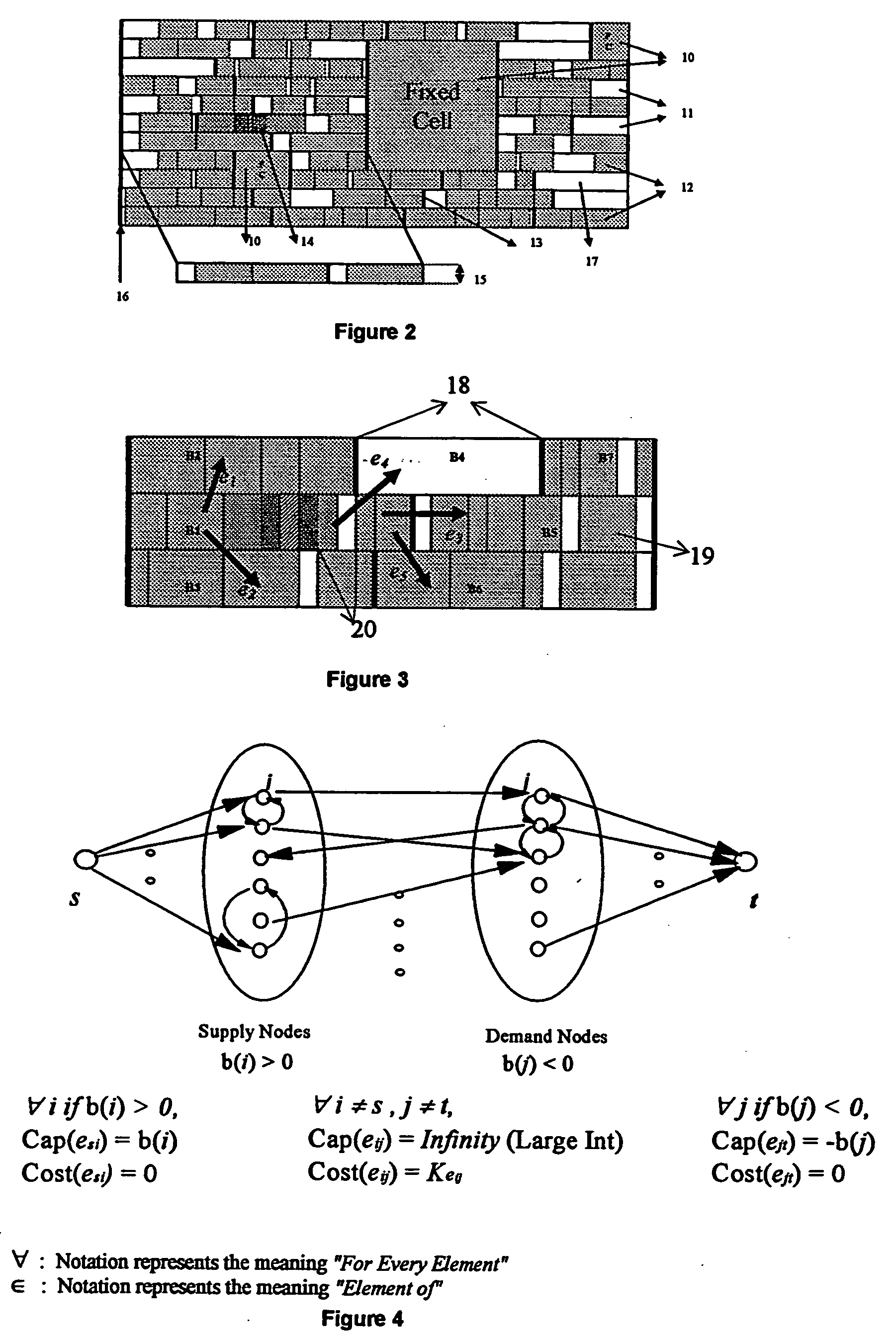Method for legalizing the placement of cells in an integrated circuit layout
a technology of integrated circuits and placement methods, applied in computer aided design, program control, instruments, etc., can solve the problems of inconvenient placement, large movement of some cells, and inability to behave well, so as to preserve the quality of placement
- Summary
- Abstract
- Description
- Claims
- Application Information
AI Technical Summary
Benefits of technology
Problems solved by technology
Method used
Image
Examples
Embodiment Construction
[0045] The flow chart for the proposed legalization (FIG. 1) describes the steps (1 through 8) involved in the present invention. Each step in the flow chart is described independently in detail in the following sections:
Step 1: Modeling Placement-Aware Global 2-D Area Migration Problem
[0046] The first step in the proposed legalization scheme represents a given placement instance as a global two-dimensional area migration problem. This involves two parts: (a) placement-aware region definition and (b) flow graph model of the 2-D area migration problem.
[0047] (a) Placement-aware region definition involves creating a model of a given placement instance reflecting regions of overlap (14, supply points with excess assignment), regions of free-space (17, demand points with available space in the layout), and regions with zero-capacity (10, blockages and fixed objects), all of which are illustrated in FIG. 2. Shown therein is a physical representation of the region definition scheme for...
PUM
 Login to View More
Login to View More Abstract
Description
Claims
Application Information
 Login to View More
Login to View More - R&D
- Intellectual Property
- Life Sciences
- Materials
- Tech Scout
- Unparalleled Data Quality
- Higher Quality Content
- 60% Fewer Hallucinations
Browse by: Latest US Patents, China's latest patents, Technical Efficacy Thesaurus, Application Domain, Technology Topic, Popular Technical Reports.
© 2025 PatSnap. All rights reserved.Legal|Privacy policy|Modern Slavery Act Transparency Statement|Sitemap|About US| Contact US: help@patsnap.com



